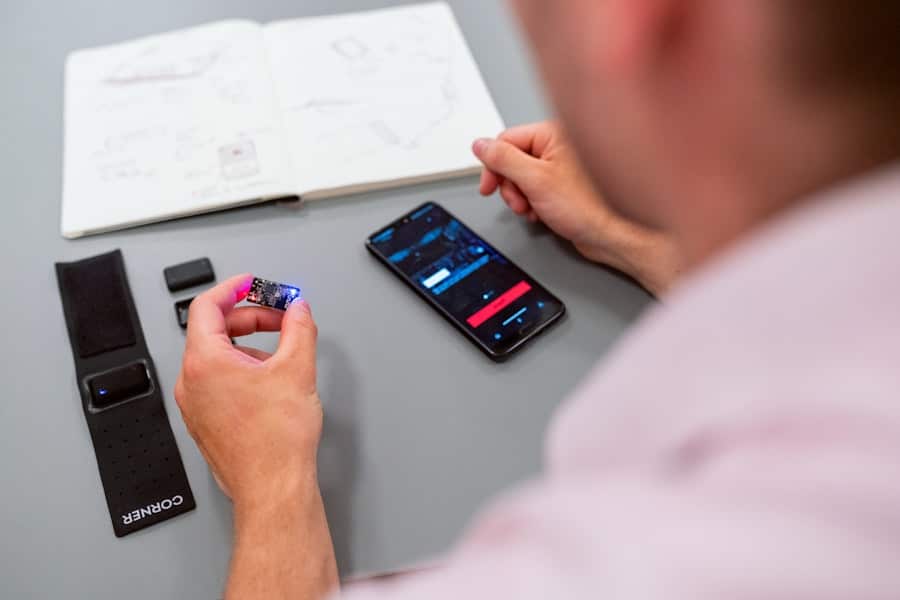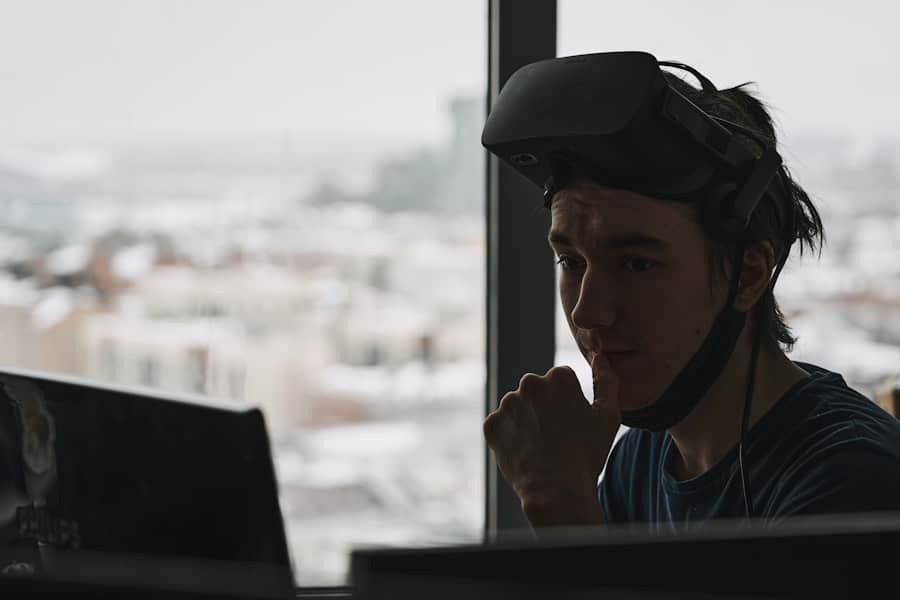Post-Traumatic Stress Disorder (PTSD) is a mental health condition that can develop after an individual experiences or witnesses a traumatic event. For veterans, the causes of PTSD are often rooted in their military service, which may include exposure to combat, life-threatening situations, or the loss of comrades. The symptoms of PTSD can be debilitating, manifesting as flashbacks, severe anxiety, nightmares, and uncontrollable thoughts about the traumatic event.
These symptoms can significantly impair a veteran’s ability to function in daily life, affecting their relationships, employment, and overall quality of life. The prevalence of PTSD among veterans is alarmingly high. According to the U.S.
Department of Veterans Affairs (VA), approximately 11-20% of veterans who served in Operations Iraqi Freedom and Enduring Freedom have PTSD in a given year. This statistic underscores the urgent need for effective treatment options tailored to the unique experiences of veterans. The impact of PTSD extends beyond the individual veteran; it also affects families and communities, leading to increased rates of substance abuse, homelessness, and suicide among veterans.
Understanding the complexities of PTSD is crucial for developing effective interventions that can help veterans reclaim their lives.
Key Takeaways
- PTSD can have a significant impact on veterans, affecting their mental health and daily functioning.
- Virtual reality has emerged as a promising tool in the treatment of PTSD, offering immersive and interactive experiences for veterans.
- The science behind VR therapy for PTSD involves creating a safe environment for veterans to confront and process their traumatic experiences.
- Case studies and success stories have demonstrated the effectiveness of virtual reality programs in reducing PTSD symptoms and improving veterans’ quality of life.
- Overcoming challenges and limitations in VR therapy for PTSD requires ongoing research, development, and accessibility for veterans in need.
The Role of Virtual Reality in PTSD Treatment
Enhancing Traditional Exposure Therapy
Traditional exposure therapy involves gradually exposing patients to the memories and triggers associated with their trauma, allowing them to confront and process their feelings in a safe space. VR takes this process to the next level by creating realistic simulations that can evoke the sights, sounds, and even smells of traumatic environments without the need for actual exposure to danger.
Engaging Veterans in a New Way
One of the most significant advantages of VR therapy is its ability to engage veterans in a way that traditional therapies may not. Many veterans may feel disconnected from their experiences or reluctant to discuss their trauma openly. VR provides an alternative avenue for them to confront their fears and anxieties through interactive scenarios that mimic real-life situations.
Increased Motivation for Treatment
This engagement can lead to increased motivation for treatment and a greater willingness to participate in therapeutic processes.
The Science Behind VR Therapy for PTSD

The efficacy of VR therapy for PTSD is grounded in psychological principles and neuroscience. When individuals experience trauma, their brains often encode these memories in a fragmented manner, leading to intrusive thoughts and flashbacks. VR therapy aims to help veterans reprocess these memories by providing a safe environment where they can confront their trauma without the associated risks.
This process is known as “exposure therapy,” which has been shown to reduce symptoms of PTSD by helping individuals integrate their traumatic memories into a coherent narrative. Research has demonstrated that VR therapy can lead to significant reductions in PTSD symptoms. A study published in the journal “JAMA Psychiatry” found that veterans who underwent VR exposure therapy reported a 30% reduction in PTSD symptoms after just one session.
The immersive nature of VR allows for a more profound emotional engagement than traditional methods, which can enhance the therapeutic experience. Additionally, VR therapy can be tailored to individual needs, allowing therapists to customize scenarios based on specific triggers or experiences unique to each veteran.
Virtual Reality Programs for PTSD: Case Studies and Success Stories
Several innovative VR programs have been developed specifically for treating PTSD among veterans, showcasing promising results. One notable example is the “Bravemind” program, developed by the University of Southern California’s Institute for Creative Technologies. Bravemind immerses veterans in a virtual environment that replicates combat scenarios, enabling them to confront their fears while under the guidance of a trained therapist.
Another success story comes from the “Virtual Reality Exposure Therapy” (VRET) program used at the VA San Diego Healthcare System. This program allows veterans to engage with virtual environments that simulate combat situations or other traumatic experiences they may have encountered during service.
Feedback from participants has been overwhelmingly positive, with many expressing relief from symptoms that had previously hindered their daily lives. These case studies highlight not only the effectiveness of VR therapy but also its potential to transform the therapeutic landscape for veterans struggling with PTSD.
Overcoming Challenges and Limitations in VR Therapy for PTSD
Despite its promise, VR therapy for PTSD is not without challenges and limitations. One significant barrier is accessibility; not all veterans have access to the necessary technology or facilities equipped with VR systems. Additionally, there may be logistical hurdles related to training therapists in the use of VR technology and ensuring that they are adequately prepared to guide veterans through these immersive experiences.
Another concern is the potential for adverse reactions during VR sessions. While many veterans find VR therapy beneficial, some may experience heightened anxiety or distress when confronted with traumatic memories in a virtual setting. It is crucial for therapists to monitor participants closely and provide appropriate support throughout the process.
Furthermore, ongoing research is needed to establish standardized protocols for VR therapy, ensuring that it is safe and effective for all individuals seeking treatment.
The Future of VR Therapy for PTSD: Innovations and Advancements

Enhancing Realism and Effectiveness
Innovations such as improved graphics, haptic feedback devices, and artificial intelligence could enhance the realism and effectiveness of virtual environments. For instance, incorporating haptic feedback could allow veterans to feel physical sensations associated with their trauma, further immersing them in the therapeutic experience.
Personalized Treatment Plans
Advancements in machine learning could enable personalized treatment plans based on individual responses to therapy. By analyzing data from previous sessions, AI algorithms could help therapists tailor scenarios that resonate most with each veteran’s unique experiences and triggers.
Improved Outcomes and Engagement
This level of customization could lead to more effective outcomes and greater engagement in the therapeutic process.
The Importance of Accessible and Affordable VR Therapy for Veterans
As VR therapy gains traction as a viable treatment option for PTSD among veterans, ensuring accessibility and affordability becomes paramount. Many veterans face financial barriers when seeking mental health care, and the cost of advanced technologies like VR can be prohibitive. It is essential for policymakers and healthcare providers to work together to develop funding models that support the integration of VR therapy into existing mental health services.
Additionally, increasing awareness about the benefits of VR therapy among veterans and their families is crucial. Outreach programs can help educate veterans about available resources and encourage them to seek help without stigma or fear. By making VR therapy accessible and affordable, we can empower more veterans to take control of their mental health and embark on a path toward healing.
Supporting Veterans Through VR Therapy: Resources and Organizations
Numerous organizations are dedicated to supporting veterans through innovative therapies like VR treatment for PTSD. The VA has been at the forefront of integrating technology into mental health care, providing resources and funding for research into effective treatments. Additionally, non-profit organizations such as Wounded Warrior Project and Give an Hour offer programs that connect veterans with mental health professionals trained in cutting-edge therapies.
Community-based initiatives also play a vital role in supporting veterans seeking VR therapy. Local clinics and mental health organizations are increasingly adopting VR programs as part of their treatment offerings. By fostering partnerships between technology developers, healthcare providers, and veteran support organizations, we can create a comprehensive network that ensures veterans have access to the best possible care.
In conclusion, while challenges remain in implementing VR therapy for PTSD among veterans, its potential benefits are undeniable. As technology continues to evolve and more success stories emerge, there is hope for a future where all veterans can access effective treatments that help them heal from their traumatic experiences.
There is an interesting article on the best software for 3D animation that explores how technology is revolutionizing the field of animation. This article delves into the various software options available for creating stunning 3D animations, showcasing the power of technology in the creative industry. Just like how VR is being used to combat PTSD through immersive therapy programs, 3D animation software is also pushing boundaries and opening up new possibilities for artists and creators.
FAQs
What is PTSD?
PTSD stands for Post-Traumatic Stress Disorder, which is a mental health condition that can develop after a person has been exposed to a traumatic event.
How is VR used to combat PTSD?
VR (Virtual Reality) is being used as a tool for immersive therapy programs to help combat PTSD. It allows individuals to experience simulated environments that can help them confront and process their traumatic experiences in a controlled and safe setting.
What are the benefits of using VR for PTSD therapy?
Some of the benefits of using VR for PTSD therapy include providing a safe and controlled environment for exposure therapy, allowing for repeated exposure to traumatic memories, and offering a more engaging and interactive experience compared to traditional therapy methods.
Are there any studies supporting the effectiveness of VR therapy for PTSD?
Yes, there have been several studies that have shown promising results in using VR therapy for PTSD. Research has indicated that VR therapy can lead to reductions in PTSD symptoms and improvements in overall mental health for individuals with PTSD.
Is VR therapy widely available for individuals with PTSD?
While VR therapy for PTSD is still considered a relatively new approach, it is becoming more widely available as the technology continues to advance and more research supports its effectiveness. However, access to VR therapy programs may vary depending on location and healthcare providers.


Add a Comment